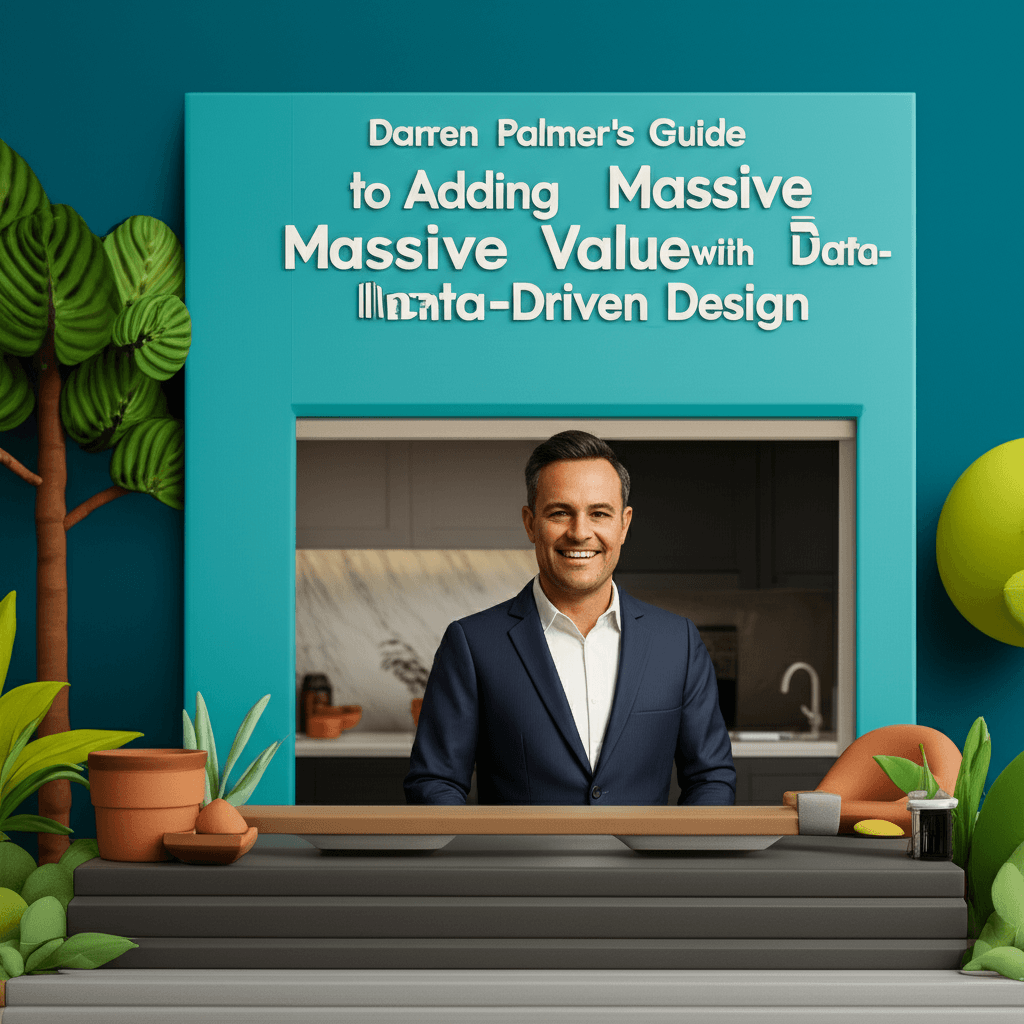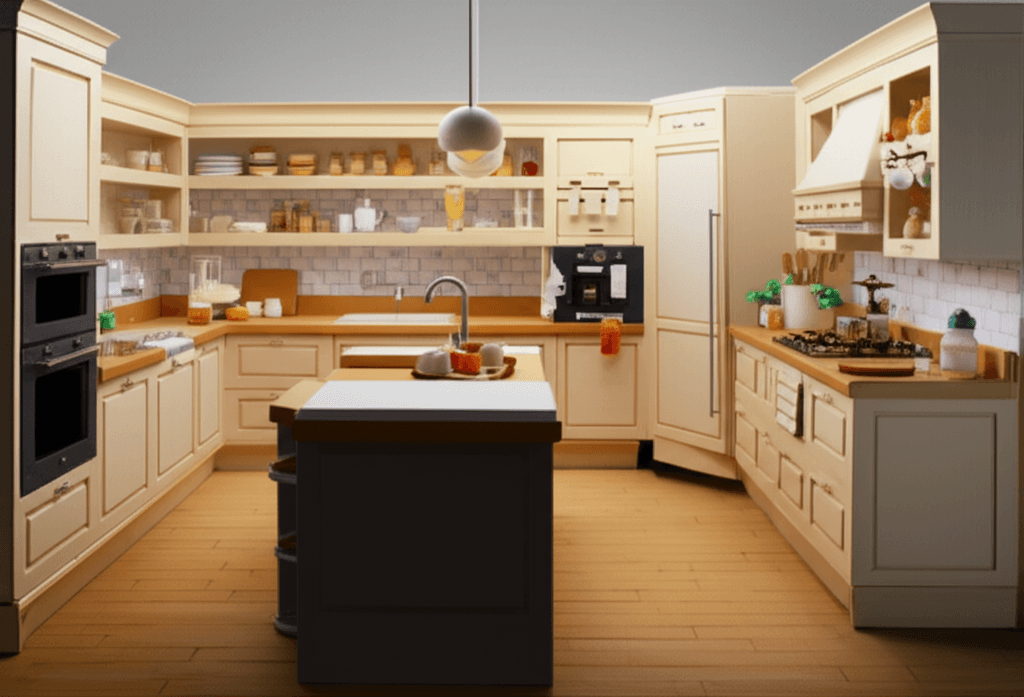Darren Palmer's Guide to Adding Massive Value with Data-Driven Design
Unlock renovation profits by blending expert design principles from 'The Block' judge with smart real estate data and market analysis.

Introduction
Every property investor dreams of a renovation that not only looks spectacular but also delivers a significant return on investment. But how do you bridge the gap between aesthetic appeal and tangible profit? We've distilled the wisdom of Darren Palmer, renowned interior designer and judge on The Block, to create the ultimate guide. It’s not just about choosing the right paint colour; it’s about making strategic, data-informed decisions that add massive value to your property. This is your masterclass in transforming any space from average to exceptional, ensuring every dollar you spend works harder for you.
The Golden Rule: Let Data Drive Your Design
Before a single wall is touched or a tile is chosen, the most critical work happens on a spreadsheet. Darren Palmer, a self-professed “nerd for data,” emphasises that the most successful renovations are grounded in a deep understanding of the market. This involves analysing comparable sales, or “comps,” to identify what features, finishes, and layouts are commanding the highest prices in your specific area. It’s about meeting market expectations and then adding a little extra—what Palmer calls the “surprise and delight” factor—to stand out from the competition. By understanding the end-user data—whether the market consists of young families, downsizers, or young professionals—you can tailor your design to their specific needs, ensuring maximum appeal and profitability. The key is to avoid guesswork and instead use robust information to guide every decision, from floor plan changes to fixture selection. For a deeper dive into market trends, a powerful tool like the HouseSeeker Data Analytics Hub can provide the insights you need.

High-Impact Structural Changes for Maximum ROI
While cosmetic updates can offer a quick lift, the biggest value-adds often come from reconfiguring a property's layout to improve its flow and functionality. Palmer points to underutilised areas like redundant hallways and awkward foyers as prime opportunities. By reclaiming this “dead space,” you can achieve game-changing results, such as turning a one-bathroom apartment into a highly desirable two-bathroom property. This kind of spatial planning adds tangible amenity—a key driver of value. It's not about making a space bigger, but smarter. These changes demonstrate a home’s potential and directly address the functional needs of the target market, making them some of the most powerful investments in any renovation project.
Mastering the Modern Kitchen: The Five Functional Zones
The traditional “working triangle” of kitchen design is outdated for modern, open-plan living. Instead, Palmer advocates for a more sophisticated approach based on five distinct functional zones. A well-designed kitchen flows effortlessly because these zones are logically placed in relation to one another.
Consumables: The pantry and fridge, where food is stored. This zone needs adjacent bench space for easy loading and unloading of groceries.
Non-Consumables: Storage for plates, glasses, and cutlery. This should be conveniently located near the cleaning zone for easy unpacking of the dishwasher.
Cleaning: The sink, bin, and dishwasher. These should be grouped together to create an efficient workflow from scraping plates to loading the dishwasher.
Preparation: The primary bench space, ideally a large, unencumbered area like an island bench, which serves multiple purposes from meal prep to casual dining.
Cooking: The cooktop and oven. This zone requires adequate space on either side for placing hot pots and pans safely.

The Art of Perception: Styling, Space, and Colour
How a space feels is just as important as how it functions. Simple styling choices can dramatically alter the perception of a room's size and value.
Furniture Placement: One of the most common mistakes homeowners make is pushing furniture up against the walls. Palmer explains that pulling your sofa and chairs away from the walls, even by a few centimetres, creates breathing room and gives the illusion of more space. Arrange furniture to facilitate conversation, take advantage of views, and accommodate media, rather than making the TV the sole focus.
Colour Theory: Choosing the right paint colour costs the same as choosing the wrong one, but the impact is monumental. Palmer’s advice is to never test paint samples directly on the wall. Instead, paint a large piece of white card and move it around the room at different times of the day. This allows you to see how the colour changes with the light and how it interacts with your flooring and furnishings. The surrounding environment—be it a leafy garden or a neighbouring brick wall—will cast its own hue, influencing how the colour appears in your home.
Selling the Dream vs. Impressing the Valuer
Successfully adding value means understanding you have two different audiences: the buyer and the valuer. Each requires a completely different approach.
For the Buyer: You are selling an aspirational lifestyle. The goal is to create an emotional connection. Styling should demonstrate the property's best possible use, showcasing its functionality and creating a mood. The home should feel clean, organised, and inviting, as if a very tidy person has just stepped out. This is where you engage the senses and sell the dream.
For the Valuer: Emotion is irrelevant. Valuers operate on pragmatism, data, and risk mitigation. Your job is to make their job easy. Provide them with a list of recent, relevant comparable sales that support your desired valuation. Present a property that is well-maintained, structurally sound, and free of any obvious defects. The focus here is on ticking boxes and making direct, data-backed comparisons that are easy to justify. To find the most relevant sales data to support your valuation, leverage the tools available on the HouseSeeker Data Analytics Hub.
Conclusion: Your Blueprint for Renovation Success
As Darren Palmer's insights reveal, a profitable renovation is a masterful blend of art and science. It begins with a solid foundation of data and a clear understanding of your target market. From there, it's about making intelligent design choices that enhance functionality—reclaiming wasted space, creating logical kitchen zones, and arranging furniture to maximise flow. By tailoring your presentation to either the emotional buyer or the pragmatic valuer, you can ensure your hard work translates into the highest possible financial return. Armed with this strategic blueprint, you're ready to create spaces that not only inspire but also deliver impressive profits.
Ready to find your next renovation project or analyse your current property's potential? Explore the HouseSeeker Data Analytics Hub to access the comprehensive market insights you need to make your next move a success.
Frequently Asked Questions
Should I always include a bathtub in a bathroom renovation?
This depends entirely on your target market, which you can determine by analysing local comps. If you're renovating a family home in an area popular with people who have young children, removing the only bath could be a significant mistake. However, in an inner-city apartment aimed at young professionals, a large, luxurious shower might be a more valuable and appealing feature.
What's the biggest mistake renovators make with colour?
The most common error is choosing a paint colour in isolation without considering the specific light and environmental factors of the room. A white that looks perfect in the store can look yellow, blue, or even pink depending on the room's orientation, the colour of the flooring, and what's outside the window. Always test large samples on a movable card within the actual space before committing.
How do I create a clear plan for my renovation?
Professional designers always start with a detailed brief. Before you begin, write down your key constraints and goals. This includes your budget, timeline, target market, must-have features, and the overall mood you want to create. This written document becomes your roadmap, helping you make consistent decisions that align with your initial vision and prevent costly mistakes.
